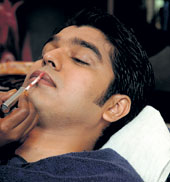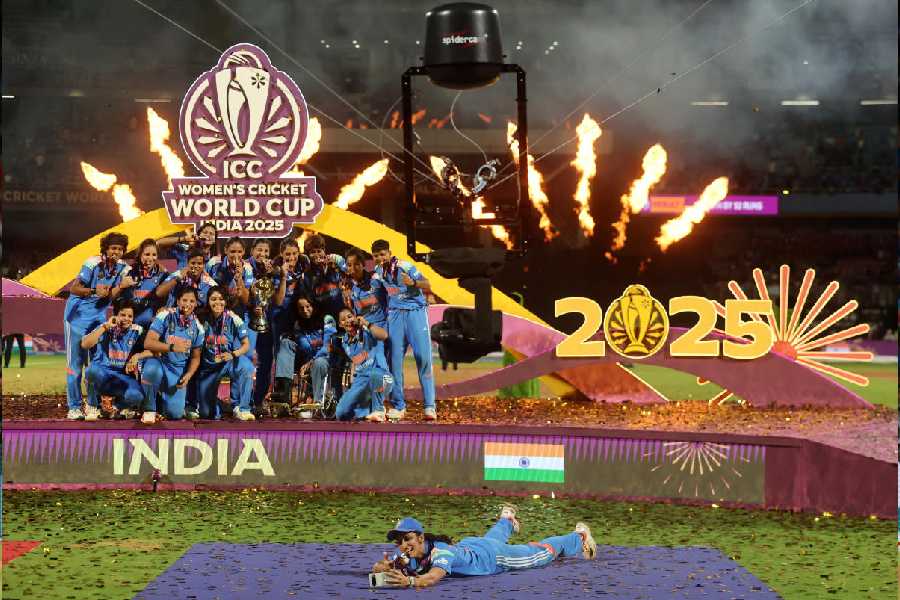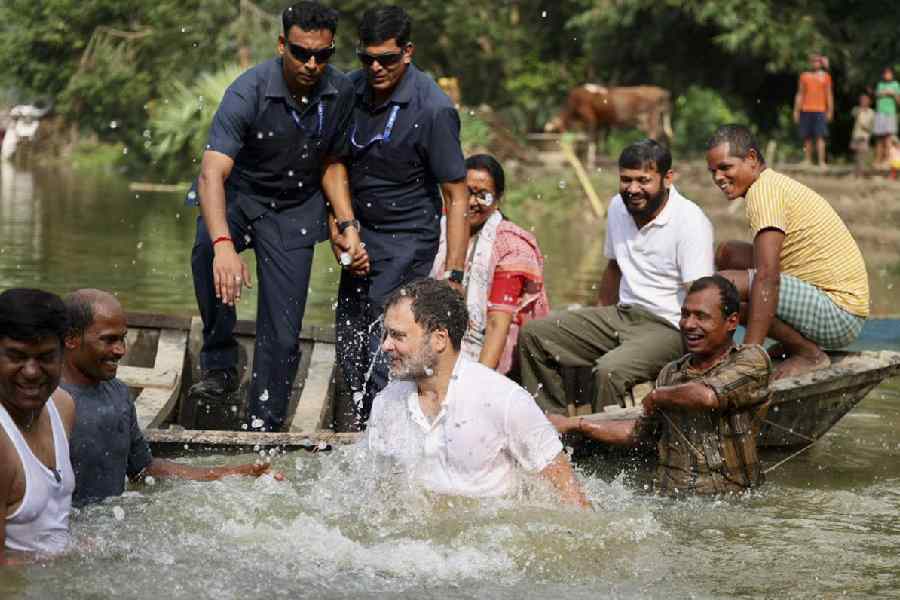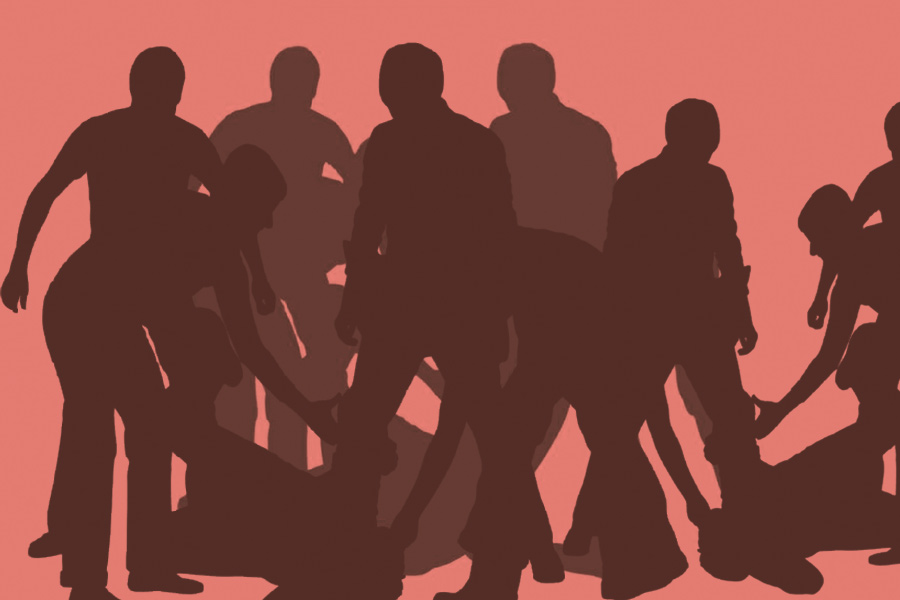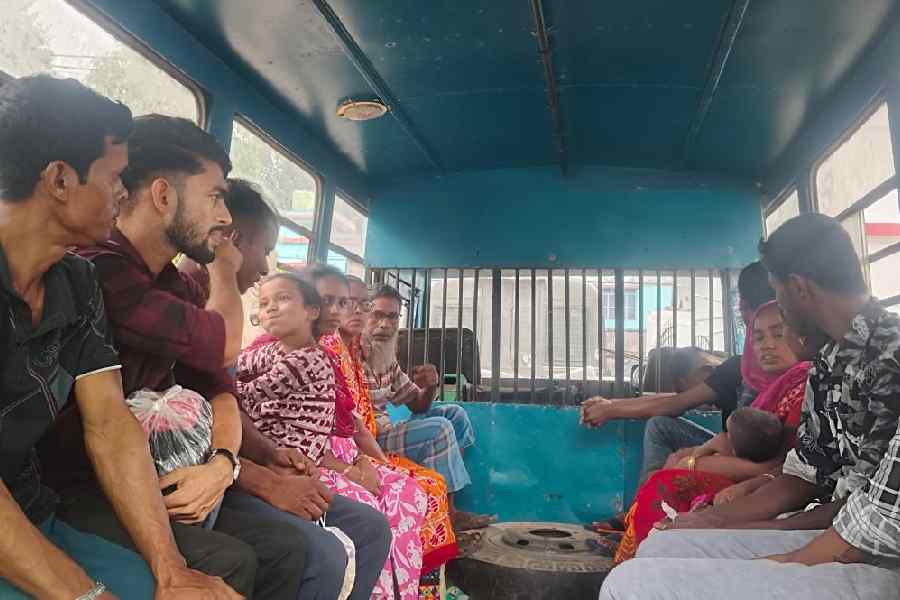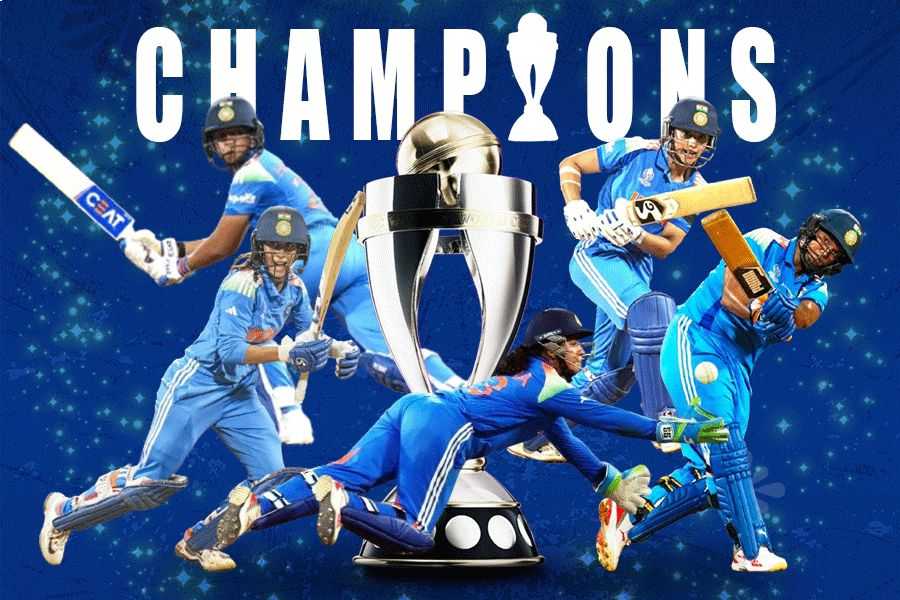 |
Two weeks ago Shilpi Mukherjee’s best friend Roshmila got married. On the day of the boubhaat ? the reception party hosted by the groom’s side ? Shilpi had promised to lend a helping hand with the bridal make-up. A bit late, she hurried up the stairs of the house, spotted what she thought was the bride’s room and rushed in. The floor was strewn with compacts, mascara, perfumes, cloth strips for waxing and the usual bridal paraphernalia. The bride was hardly visible amid the animated bunch of relatives. Shilpi made her way through the jutting arms to greet her friend. But face to face with the bride, she stared in disbelief. It wasn’t Roshmila but the groom ? slipping his hands into a finely embroidered red kurta ? smiling politely at her, with his curled eyelashes, streaked locks and a waxed chest to boot.
Brace yourself for a dramatic revelation. Yes, masculinity is being redefined and the Bengali groom today is indeed the new bride. Gone are the days when a wedding was exclusively a bride’s affair and the groom was a mere ? but necessary ? prop. Bengali men are up in arms to grab all the potential attention that they had been deprived of, down the ages.
Affirms fashion diva Sharbari Dutta, “In the last couple of years, there has been a 200 per cent rise in men taking a keen interest in what they wear and how they look at the wedding reception.” And mind you, don’t dismiss this as an upper-middle class phenomenon. Dutta ? one of the pioneers of men’s wear ? points out that her clientele includes small-time businessmen, lecturers and even young aspiring men from the suburbs. Money is no longer the issue ? contemporariness is.
 |
You can’t help but agree once you take a quick peek at the chic unisex parlours in the city. Both young grooms and the not-so-young paunchy ones are confidently opting for unconventional hairstyles that were unimaginable even a few years ago, especially on occasions like weddings. Compared to last year, there has been a 50 per cent increase in the number of male customers at Habib’s in Salt Lake, who are ready to dish out money and explore fresh possibilities. Says spokesperson Rajesh Debnath, “The metamorphosed groom no longer shies away from bleaching, facial, manicure or pedicure. Some even go in for waxing, while there are those who don’t even hesitate to touch up their eyebrows.”
Being tentative is out, being vocal is in. Dutta notes, “The groom today is more assertive about his choice unlike earlier times when almost anybody could choose anything on behalf of the groom.” Take Rahul Sen. The 33-year-old would put any bride to shame. All set to get married soon, Sen took leave for five days to do his shopping. And believe it or not, he has already spent about Rs 68,000 on his heavily embroidered maroon kurta, an off-white dhoti with a delicate golden border teamed with a silk dupatta with a floral pattern. He is still unhappy as he hasn’t yet been able to buy the right kind of shoes. Small wonder then that his mother complains, “He’s as fussy as a bride-to-be.”
Pradeep Choudhury is equally restless. Though his wedding is six months away, Choudhury has already undergone five sittings at the parlour alternating between facial and plain steam. “That will ensure a natural, glowing skin by the time I get married,” says Choudhury.
If the Bengali groom has metamorphosed from a shy idealist to a declared materialist, the markets have had much to contribute in terms of injecting an aspirational element into an untapped aspect of male desire. Till the early 1990s, the fashion market’s clientele comprised only women. The male population was not even taken into consideration. But with the fashion boom in the country and the changing profile of the urban consumer, inroads were made into this male bastion. “The idea was that even if two per cent of the male population responded, it would ensure profit,” says Calcutta-based consumer market researcher Supratim Guha. The response was much more than expected. And the rest is a fairy tale.
 |
Any shopping mall in the city today devotes sprawling floors to garments and accessories for men. An incredible range of ties, cuff-links, angarkhas, embroidered kurtas, perfumes, colognes, gels and skin toners are on display to lure the future groom. Traditional Bengali stores such as Punjabi House and Kimbadanti in south Calcutta stock an enviable range of men’s kurtas to match the range in designer boutiques. Walk into any of the all-time favourite shoe stores such as Bata, Mochi or even Khadim’s and you’ll be surprised at the range and style of men’s shoes on offer. Sometimes the variety far surpasses that in the women’s section.
But as far as the startling change in the Bengali male dress code is concerned, filmmaker Rituparna Ghosh ? once known for draping exquisite dupattas and provoking the cautious Bengali’s sensibility ? attributes it to the influence of Hindi films. “Take films like Kabhi Khushi Kabhi Ghum, Dilwale Dulhaniya Le Jayenge or Hum Aapke Hain Kaun. When you see handsome heroes sporting such lovely costumes, you want to be one of them. In fact, everyone wants to be part of that homogeneity,” he explains.
Male fashion icons have existed in the past too. In the 1970s, Dev Anand and Rajesh Khanna were role models and men used to swear by the width of their bell-bottom flairs or the style of their collars. But then, says Ghosh, “When it came to weddings or Durga puja, there was an ambivalence regarding one’s loyalty and Tollywood won over Bollywood. So the groom would opt for an Uttam Kumar look. But now that ambivalence has dissolved to a large extent.” Ghosh predicts that in the next 10 years, there will be an enviable range of designer jewellery for men.
And there is reason to take him seriously. A late evening visit to Hang Out at City Centre is enough to prove his point. In the adjacent terrace, men jostle with women to take their pick from heaps of junk jewellery.
Pradeep Saha, who has been studying and documenting the flip side of social trends for the last two years, however, highlights another point. “Apparently it does seem that the gender lines are dissolving but it is only a cosmetic equality. In reality, both men and women are being co-opted by a gluttonous consumer market.”
Samik Basu, 70, then seems like an anachronism. In the late 1960s, when he got married, there was no element of surprise for, in those days, a white, spotless dhoti and cotton kurta was the prevalent dress code for a groom ? complemented by a clean-shaven look and a bit of face powder. Since then Basu has celebrated more than 35 birthdays.
Meanwhile, the very concept of masculinity has been redefined. Today, hair on the chest doesn’t define a man’s masculinity. Rather, it is a market-driven suave image which emerges as an absolute idea of one’s suppressed surrogate-self.

